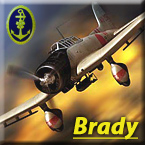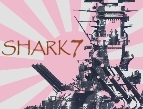Brady
Posts: 10701
Joined: 10/25/2002
From: Oregon,USA
Status: offline

|
What Follows are some exceprts from posts I have made in the past on this subject:
...........
Intelligence and Cryptanalytic Activities of the Japanese During WW 2 (Agean Park Press).
This book describes in detail many aspects of Japanese Code breaking and intel gathering during the war some of the things it cover are:
The Japanese Could read Chinese code throught the war.
The Japanese Could read Allied (US) Aircode trafic.
The Japanese Could read Weather Code.
The Japanese Could determine TF movements through intercepts.
The Japanese Had an extensive Spy network in China and the USSR/Manchuko area, that provided intell on Soviet Army disposations, and extensive intill on Chinease Army disposations.
British Air Code was partialy read.
Their is more as well, but it shows that the Intell aspect was not as one sided as one might think.
Summery of the Book:
During the perioud of Japanese expanshion:
Priour to the war, the Japanese put a lot of effort into gathering intel on the areas they intened to move into, or to atack, well know is the Consolate spy in Hawai, less well known are the operatives that worked all over the Japanese sphear of concern to pave the way for the Ocupations. These operatives would later become key figures in the Ocupation forces for their respective ares of expertise.
Types of Intel gathered Included, OOB, Geographic infermation like landing spots, water depth, roads, airfileds exc.. A working knowledge of the local populios was also key and helped the Japanese maintane controle in the ocupied areas.
Pre War and during the war, the Japanese were also, to varying degreas, suxcesfull at the art of disinfermation.
After the perioud of expanshion:
Japanese Intel provided actionable infermation on a number of isues, Thier assesment of the Situation in Siberia through Intel and other sources, alowed them to Move forces from the Kawantung Army to other theaters, that is they felt confortable doing so, because they were in the know...
Intel provided a very clear picture of the situation in China and Burma which greatly help planing.
Intel provided ample warning of the Invashion of Iwo Jima, the Ryikos(Okinawa), and the Philipines.
Intel also provided a fairly clear picture of the situation in the Northern area of operations (Alutions/Kuriles).
Intel also provided them with a general understanding of the forces araid aganst them gloabaly.
Intel also gave them- warning of impending Carrier strikes later in the war.
These acheavements are not as glamiours as the Noted Allied acheavements and in game terms are hard to efect. Also it should be noted that given the defensive nature of the situation for Japan past late 42/early 43 the opertunity to gather infermation from capruted sources was very limited or non existant. Some of the Bigest allied suxcess from Intel were:
MIdway- Eschenialy a result of Monitoring Japanese signals trafic, and getting lucky, their code was not openly broken, they simply were able to point to it as a likley invashion target, the rest as we know was just dumb luck. We also had a lot of lead time on this, this was not a real time scenario.
Yamamoto- This was some good work, and again was something that was know to be in the offing for some time.
Bismark Sea- This stemed in part from infermation that came to pass from a captured set of documents, and had a lot of lead time, but we never knew exactly when they were comming, in fact two convoys had deleavrd troops to New Gunie suxcesfully priour to the noted convoy being intercepted, that were part of the same intel scoop, namely the transfer of Men from the Kawantung Army to the New Gunie area.
Operations in New Gunie after the Bismark sea, Another captured set of code books helped Marcauther to advance up the coast of New gunie since he was able to see whear the Japnese were along the coast through signals intercepts.
The later points above were not a result of code breaking but from dumb luck, these were on the whole isolated suxcess, and not for the most part linked in any way. The Japanese at this stage of the war simply had no way to make similar use of their intell. except to put forces in the way of the advancing allies, like they did with considerable efect at Okinawa and Iwo Jima, and to a lesser degree in the Philipines.
CBI:
In this theater as noted above the Japanese enjoyed considerable suxcess across the board, they could see the map so to speak for the whole war.
In game terms:
Japanese Intel reports should show:
Radio Transmitions from TF's at sea, more or less as it does now.
List the locations of US Air units in the reports as well.
List the locations of Allied HQ units in the reports.(randomanly and with a degree of eror)
Show randomanly and with some degee of eror whear HQ units are preparing for atack.
List Soviet Ground unit locations randomanly and witrh some degree of eror.
List Soviet Naval assests in port.
List British units in Burma with a degree of eror and randomanly.
List Chinese Units(all including air) and note their movements.
................
From: MHQ Autom 2002, in the Article: Secret Key To MacArthur's Success p.18
" Australian, British, and American Cryptanalysts at the central Beuro had attacked the Japanese main administrative army code for nearly two years, but were still unable to penatrate it's intermost secerats. They shared their finindgs and cooperated closly with US Army Counterparts working at signals Intelegance services, located at Arlington Hall Station, Virgina, just across the potamic River from Washington. With Assistance from the Austrailians and British signals units and analyis centers in India, the Centrail Beureau and Artlington Hall had enjoyed magor successes aganst certain Japanese army code syatems,notably the japanese army airforces air-ground code in 1943 and the Japnese army's shiping cypher in Aprial of 1943"
"By Early January 1944, howeaver, no one except the imperial Japanese Army was reading it's most secerate military radio messages."
"Magor Gewneral George V. Strong, US cheif of military intelegance, tesified to the security of Japanese army communications, Strong declaired in January 1944 the imperial armys ciphers were the most difficult of any enemy systems the allies had to solve to that point in the war. In his opinion Japanese army ciphers presented much greater dificulity than originoaly anticapated, and work by the allied cryptanalysts was much more ardious and time consuming than in "any other cryptographic material with which there ha been experance"
Of course in January of 44 the Austrailians found a code book in New Gunie that would change all this, by Spring 44 we were able to read partial messages of this code.
This window of being able to read the Japanese Army code greatly aided macauther in his Campagine in New Gunie and espichaly in the effort at Holliandia.
Howeaver..."On Aprial 8th,1944, the IGHQ changed the encipherment book for all Japanese high leval cryptologic systems."
Later of course they uncoverd yet another code book from the Yoshimo Maru.
Clearly untill well into 43 not much was being read by the Allies about the Japanese army via intel intercepts, and after it that it was Spoty at times.
........................................................................................................
p.424 At DAwn We Slept:
"So Rochefort and his devoted workers in Combat Intelegance strained every nerve to keep track of japanese ship movements. On Novemebr 27th his summery indicated: " No further information on the presence of Carier Divishion Five in the Mandates." The same report advised: "Cariers are still located in home water's,,,," so Japanese deception tactics continued to work effectively. The next day Rochfort had a disturbing development to note: "As has been previously reported the suspected {Japanese} Radio Intelegance net is very active and is becoming more so.... This activaty is interputed to indacate the the R.I. net is operating at full strength upon US Naval comunacations and IS GETTING RESULTS [Rochefort's capital's].
Roheforts report was entirely accurate. From many interceptorstattions the fourth Department of the naval General Staff monitored American Naval radio trafic. It could tell, for instance, when Pearl Harbor Signaled a Battleship, or When Kimmels ships Flashed Pearl Harbor. Somtimes it could estimate aproxamate loacations, but not often. Japanese Radio intelegance was in much the same situation a sRochefort: that it could not decipher the contents of the message it monitored and had to work from call signals alone. The two radio interception nets were like wariours playing a game of blind mans bluff.....The Japanese divided American Naval messages into three catagories, Urgent,Ordinary and meterological. The naval Genearl staff kept a statiscial record of all the messages, grouping them acording to their imporatnace and number. In this way it attempted to judge the scope of American fleat activity. The US changed the call signs from time to time. For several days afterword the Japanese would be confused, but by hard work they solved the new paterns. Howeaver, after Pearl Harbor the US Navy devised systems which made it extreamly dificult for the Japanese even to break the call signals."
JN-25:
"..."We read the occasional small message in JN-25 before the Japanese attack on Pearl Harbor," he says. "But never did we read JN-25 on a general basis, because we didn't have the staff to do this. Later, during the war, when we were concentrating on JN-25 full blast, we were able to read only five or six percent of the total JN-25 intercepts.".."
From this sight:http://www.corregidor.org/chs_crypto1/jn25_2.htm
This was the more read of the Japanese code syatems, and only half of all Japanese Navel signal trafic actualy used this system, as we can see from other posts and referances above, the rest of the Japanese code's for the various brancehs and organasations were largely unread or spoty at best, particularly dificult to read were the Japanese army codes which were unread for almost half the war, yet we see examples above whear Army Ground units are labled in the intell report...this I find suspect. Also Misderection was a part of all this by both sides, I wounder if this is in anyway represented in the intel report's.
Autom 2002 MHQ, Marcaurthers Greatest Secret, p.16:
"To bypass the 162th Infantry, Hidemitsu took his men into the Jungle-cladd foothills of the rugged Finisterre Range. Faced with a long, tough march, the troops quikly rid themselfs of all but the most essential survivial items that they could carry on their backs.....unnessary supplys and equipment were left behind at sio. Among items deamed unnesential were spare coppys of all the code books belonging to the twentieth Infentry Divishion.The Japanese Army prided itself on its security consciousness, and regulations stipulated taht code clerks had to burn their code parapheralia to enshure that none of the sensitive documents fell into enemy hands..Therin lies one of the most interesting storys of WW2."
The handfullof Japnese army signalmen ordered to destroy the 20th divishions code books had a practile problem. How were they going to burn the dozen or so books outdoors during the monsoon seasion? The code books themselves were compact and practicle documents, not much larger or thicker than a present day quality papper back book. But as anyone who has tried knows buring a bound volume is dificult. The pages have to be torn out a few at a time abd then tosed individualy into the fire to inshure compleate distruction. The Japnese squad had to destroy eight volums of code paraphernalia, including the red bound main Army Adminstrative Code Book, two cipher books, a geographic code book, and a chinese telegrapic code book. They could start a fire, but it would take time to burn all those documents, and during that time the telltale white smoke rising through the green jungle canopy would serve as a homming becone for any Allied fighters passing overhead. Wet Hungry and anxious to get out of Sio ahead of the Australians, the Japanese put all the code books into a small steall trunk. They then tossed in into a deep watter filled pit, expecting that the box would sink to the bottom of it's own weight. That was their first mistake a worse one followed...."
Acording to regulation the Japnese Cypher section tore off the covers of the code books and submited them along with the officer of the sections writen report stating that the books had been destroyed acording to the proper procedure, in fat that had not been destroyed, the Japanese beelaved they were and thought their code still intact.
During the first weeks in January of 44 the Austrailians entered the area of the former Japanese coumpound at Sio, previously home to some 40,000 Japanese troops, it was festooed with booby traps and the Pioners went to work to make it safe, they discovered the Metal box (err ox) and............
_____________________________
Beta Team Member for: WPO PC CF AE WiTE Obi-wan Kenobi said it best: A lot of the reality we perceive depend on our point of view
|
 Printable Version
Printable Version















 Put in some effort and you find things out.
Put in some effort and you find things out. 


 New Messages
New Messages No New Messages
No New Messages Hot Topic w/ New Messages
Hot Topic w/ New Messages Hot Topic w/o New Messages
Hot Topic w/o New Messages Locked w/ New Messages
Locked w/ New Messages Locked w/o New Messages
Locked w/o New Messages Post New Thread
Post New Thread